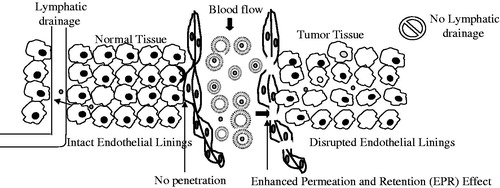Figures & data
Table 1. List of recently published reports on pH-sensitive liposomes.
Table 2. Lipids or polymer used for the preparation of pH-sensitive liposomes.
Table 3. List of patents on pH-sensitive liposomes.

![Figure 2. Targeted drug delivery from pH-sensitive liposome. (A) Mechanism involved in intracellular drug delivery; [1] Destabilization of pH-sensitive liposomes triggers the pore formation in endosomal membrane, [2] Destabilization of liposomes release the encapsulated molecules in endosome which diffuse to the cytoplasm through the endosomal membrane, [3] Fusion between the liposome and the endosomal membranes. (B) Localized delivery of anticancer drug to tumor site.](/cms/asset/d95c9d76-cfcd-439e-95e7-edb422ffe7a8/idrd_a_882469_f0002_b.jpg)
